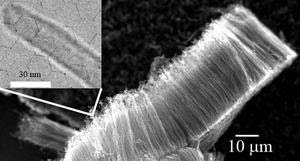Purposely Adding Defects in Carbon Nanotubes increases Energy Stored in Supercapacitors by up to 200%
University of California San Diego researchers have developed a method to enhance the capacitance (up to three times) of carbon nanotube (CNT) electrode-based electrochemical capacitors by controllably incorporating extrinsic defects into the CNTs. “While batteries have large storage capacity, they take a long time to charge; while electrostatic capacitors can charge quickly but typically have …







